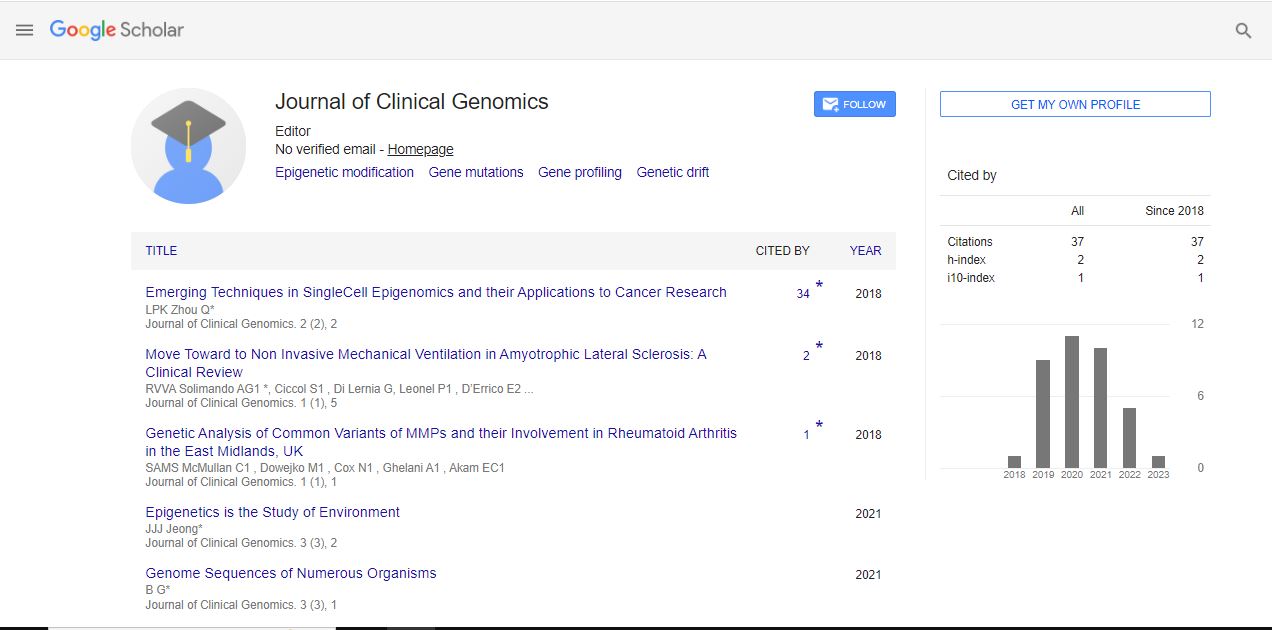Opinion Article, J Chromatography Res Vol: 6 Issue: 3
Recent Advances in Affinity Chromatography: Pioneering the Future of Biological Molecule Isolation
Wattling Paul*
1Department of Medicine, Medical University of Bialystok, Bialystok, Poland
*Corresponding Author: Wattling Paul,
Department of Medicine, Medical
University of Bialystok, Bialystok, Poland
E-mail: paulwattling@gmail.com
Received date: 05 September, 2023, Manuscript No. JCGR-23-116812;
Editor assigned date: 07 September, 2023, PreQC No. JCGR-23-116812 (PQ);
Reviewed date: 21 September, 2023, QC No. JCGR-23-116812;
Revised date: 29 September, 2023, Manuscript No. JCGR-23-116812 (R);
Published date: 06 October, 2023 DOI: 10.36648/JCGR.1000072.
Citation: Paul W (2023) Recent Advances in Affinity Chromatography: Pioneering the Future of Biological Molecule Isolation. J Chromatography Res 6:3.
Description
Affinity chromatography is a branch of liquid chromatography that focuses on the specific and highly selective interaction between a target molecule (ligand) and its corresponding binding partner (ligand receptor). It is renowned for its ability to separate, isolate, and purify a wide range of biological molecules, including proteins, enzymes, nucleic acids, and antibodies.
Principles of affinity chromatography
Affinity chromatography relies on the specific binding affinity between a target molecule and a ligand immobilized on a chromatographic matrix. Key principles include:
Ligand-receptor interaction: The selectivity of affinity chromatography is primarily attributed to the specific recognition and binding between the target molecule (e.g., a protein) and a ligand immobilized on a solid support. This ligand-receptor interaction is highly specific and can be exploited for the purification and separation of target molecules from complex mixtures.
Ligand immobilization: The ligand, typically a biomolecule, is covalently attached to a solid support, such as agarose or Sepharose beads, forming an affinity column. The choice of ligand and its immobilization strategy depends on the target molecule and the intended application.
Sample loading: The sample, which contains a mixture of molecules, is applied to the affinity column. While non-specific molecules pass through, the target molecule binds to the immobilized ligand.
Selective elution: After capturing the target molecule, the nonspecific molecules are washed away. The specific elution of the target is achieved by altering the conditions, such as changing the pH, salt concentration, or ligand-receptor interactions.
Applications of affinity chromatography
Affinity Chromatography has a wide range of applications across various scientific and industrial fields, including:
Protein purification: Affinity chromatography is a fundamental technique in protein purification. It is used to isolate specific proteins or antibodies from complex mixtures, ensuring high purity and yield.
Biotechnology and biopharmaceuticals: In biotechnology and the pharmaceutical industry, affinity chromatography plays a crucial role in purifying recombinant proteins, monoclonal antibodies, and other biopharmaceuticals.
Nucleic acid separation: Affinity chromatography is employed for the purification and separation of nucleic acids, including DNA and RNA. It contributes to molecular biology techniques such as DNA sequencing and plasmid preparation.
Enzyme isolation: Enzymes are effectively isolated and purified using affinity chromatography, making it essential in enzymology and biochemistry.
Clinical diagnostics: Affinity chromatography is utilized for the detection and quantification of biomarkers in clinical diagnostics. It is vital in assays for disease diagnosis and monitoring.
Drug discovery: Affinity chromatography is integral in drug discovery, enabling the study of drug-receptor interactions and the identification of potential drug candidates.
Recent advancements in affinity chromatography
Recent innovations have enhanced the effectiveness and versatility of affinity chromatography. Notable advancements include:
High-throughput screening: Automated systems and robotics have facilitated high-throughput screening in drug discovery and proteomics, allowing for rapid screening of ligands and target molecules.
Multimodal chromatography: The development of multimodal resins with multiple ligands on a single matrix allows for improved selectivity and binding capacity, making purification processes more efficient.
Advanced ligand design: Innovations in ligand design have led to ligands with increased specificity and affinity for target molecules, resulting in more robust and efficient purifications.
Membrane affinity chromatography: The use of membranebased systems for affinity chromatography enables larger-scale applications with shorter processing times.
Continuous chromatography: Continuous affinity chromatography systems have been developed, offering the potential for continuous and large-scale production processes.
Microfluidic affinity chromatography: Microfluidic devices and microchip-based affinity chromatography systems allow for miniaturization, rapid separations, and reduced sample and reagent consumption.
Conclusion
Affinity chromatography stands as a powerful and indispensable tool in the fields of biochemistry, biotechnology, and pharmaceuticals. Its remarkable specificity and selectivity make it an invaluable technique for the purification and separation of a wide array of of biological molecules. Recent advancements in affinity chromatography, including high-throughput screening, multimodal chromatography, advanced ligand design, and continuous processing systems, have expanded its utility in various scientific and industrial applications. As technology continues to evolve, affinity chromatography is likely to play an increasingly prominent role in addressing complex separation challenges and driving scientific discoveries.
 Spanish
Spanish  Chinese
Chinese  Russian
Russian  German
German  French
French  Japanese
Japanese  Portuguese
Portuguese  Hindi
Hindi 